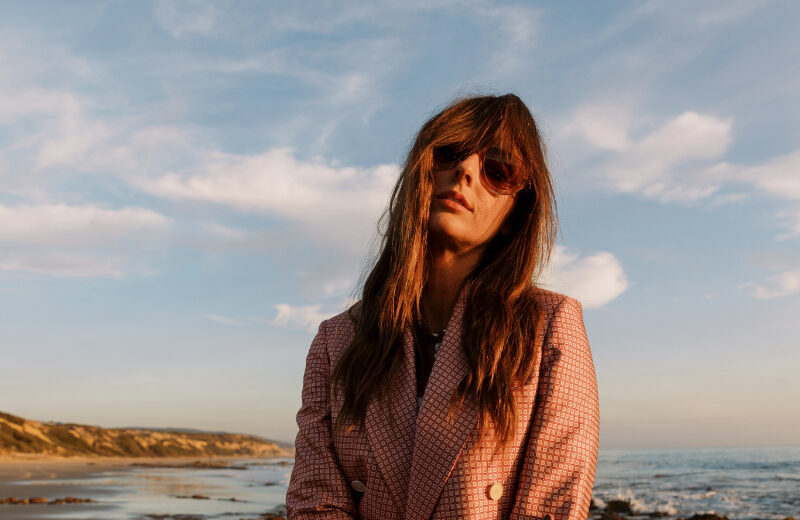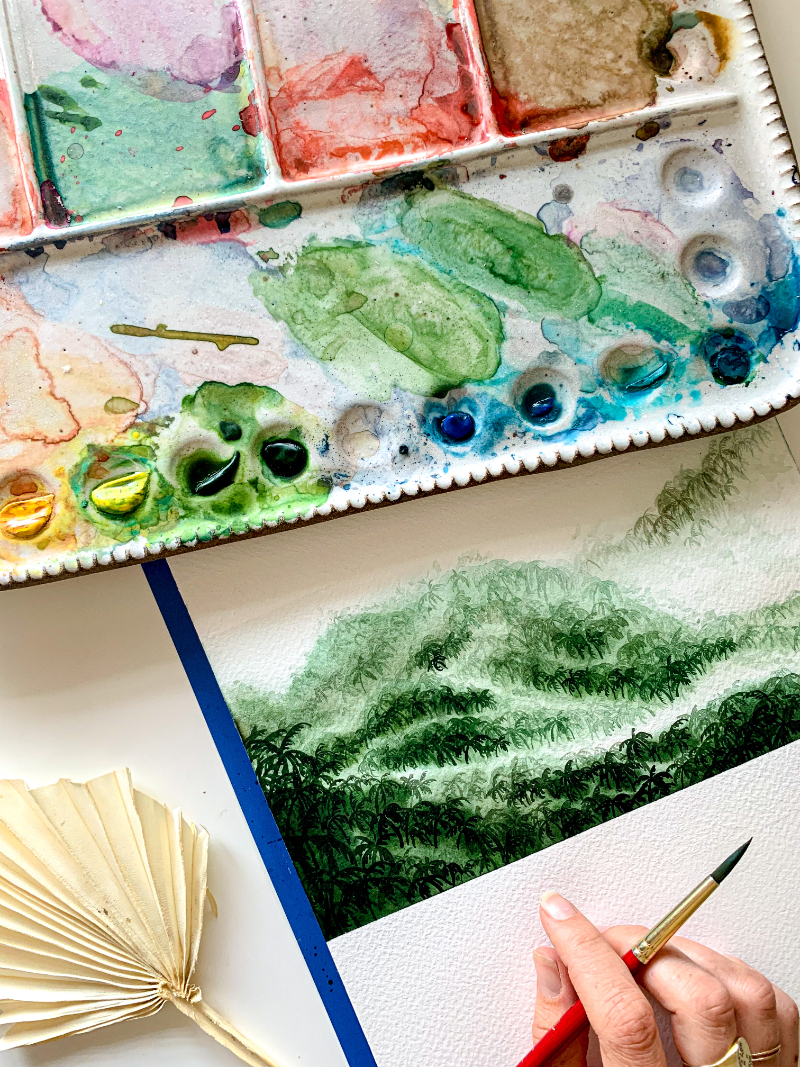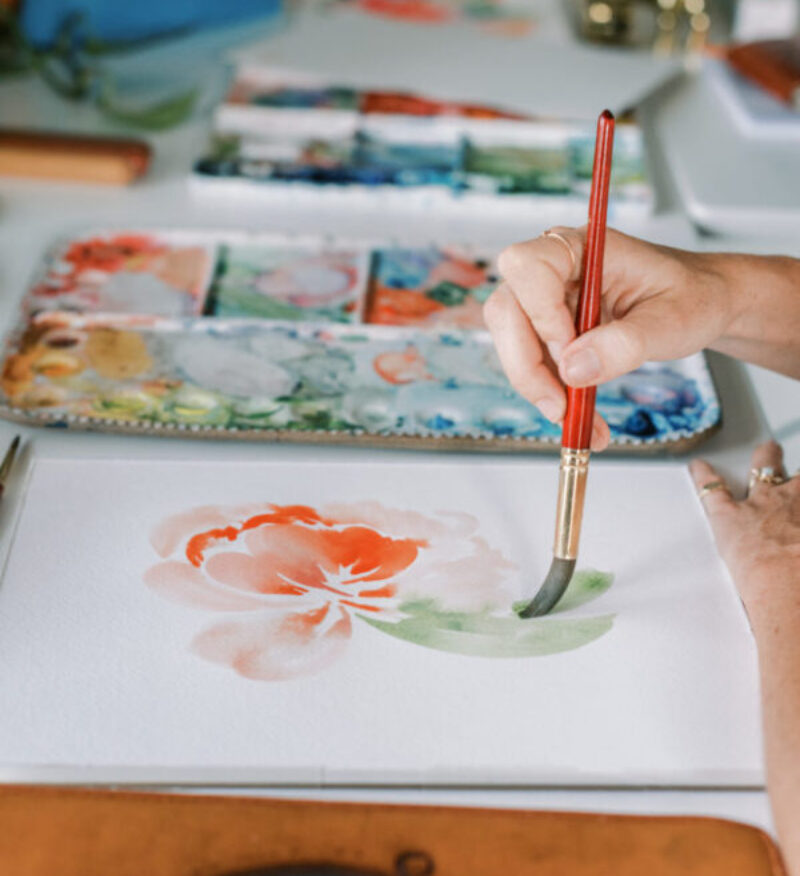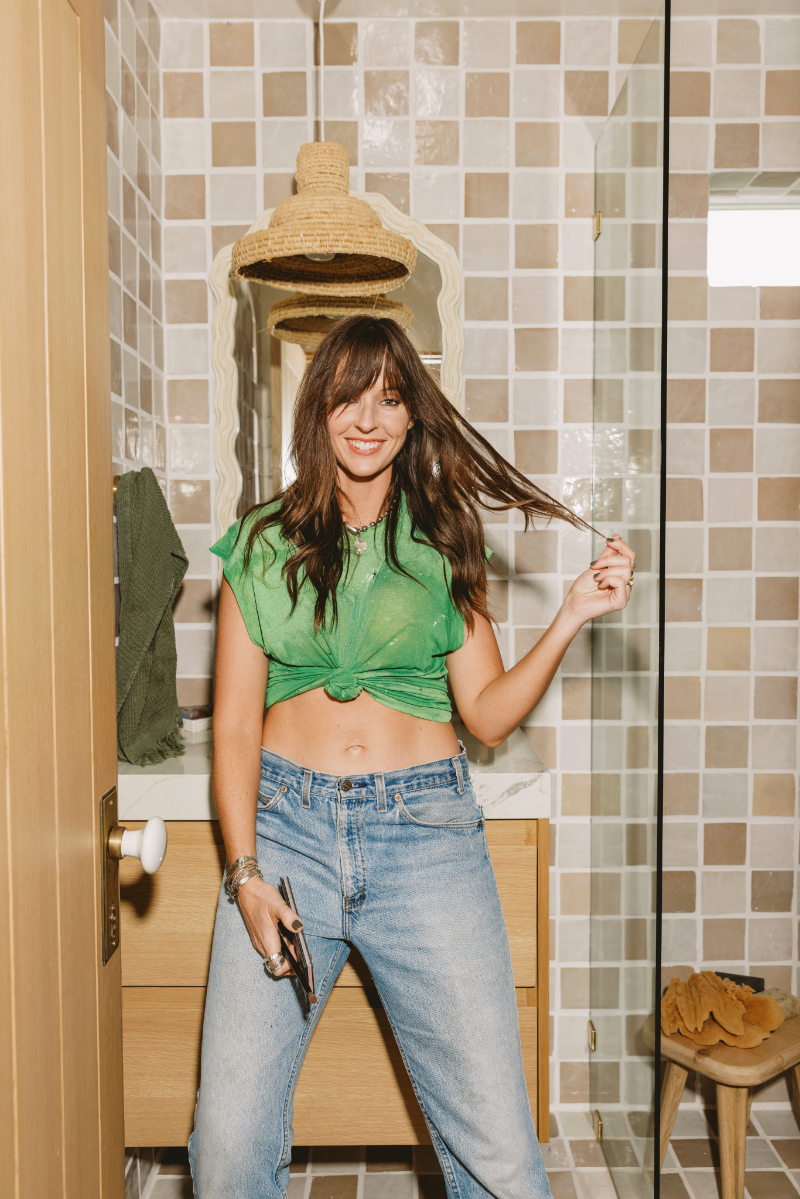You know those days when you sit down to paint, but nothing feels quite right? The colors look off, the blank page feels overwhelming, and your brain is already busy critiquing what you haven’t even made yet.
When that happens, I don’t force a masterpiece. Instead, I turn to a few of my favorite watercolor painting exercises. The kind that feel light, playful, and low-pressure. They help me reconnect with joy, experiment without fear, and remember that not every painting needs a purpose (or perfection).
If you’ve been overthinking your watercolor painting lately, these exercises might be exactly what you need too.

1. Paint Without a Plan
First up is painting with zero plan. I pick a brush, dip into paint, and just let movement guide me. I might swirl a bright color, or drag a soft shape. No sketches, no rules, just paint.
Painting without a plan forces me out of overthinking. It reminds me that mistakes can be beautiful moments.
With this watercolor painting exercise, I learn to trust my instincts. And when I let go, I often discover shapes or ideas I never expected.
Once that freedom settles in, I often ease into something more playful.
2. Color Play Over Perfection
Next, I focus on colors. I choose a palette, maybe three or four pigments that don’t match. I layer them in stripes, swirls, or splashes.
This watercolor painting exercise isn’t about control. It’s about seeing how colors mix, flow, or bloom together.
I watch wet paint drift and merge. Sometimes it looks messy. And that’s the whole point.
3. Doodle With Paint
Then I grab a fine brush and doodle. It might be petals, leaves, or random dots and lines.
This is an easy watercolor painting exercise that feels like scribbling in a notebook, only with paint. I don’t worry about polish or planning. I just let shapes emerge.
Soon, the page is alive with movement. And it’s all because I dared to doodle with paint.
4. Paint Something Tiny
Now, I shrink the scale. I grab a small scrap of paper (maybe 3×3 inches) and paint a tiny scene or flower.
This watercolor painting exercise challenges me to think small. I simplify and capture an idea in a few quick brush strokes.
Paint tiny leaves or a single petal. It’s a quick, soothing reset. And surprisingly satisfying.
Once I’m warmed up, I sometimes reach for prompts to spark something fresh.
5. Use a Prompt (That Doesn’t Make Sense)
Prompts can be spark plugs for creativity, especially the odd ones. Try:
- “Paint a cloud eating spaghetti.”
- “A teacup made of leaves.”
- “The tune of your favorite song as shapes.”
These might sound silly. And that’s exactly why they work. They break habits and free your mind.
I’ve found some of my most playful watercolor ideas come from prompts that feel a little wild.

6. The “Paint Without Looking” Game
Ready for something even more carefree? Try painting without looking at your paper.
Try setting a timer for 30 seconds. Then paint—blind. Dip your brush and move paint. No peeking.
When the timer beeps, take a look at what you created. I bet it will make you smile. The result is often raw, honest, and full of character.
This watercolor painting exercise helps me connect with my intuition. I learn to trust my brush, not my brain.
Mix and Match Exercises
One of my favorite things to do is mix these exercises together. Some days, I start with color play and end up doodling with that same palette. Other days, I’ll try a silly prompt—but keep the painting tiny and loose.
Combining exercises keeps things fresh and helps me explore new styles or ideas without pressure. For example, you could:
- Doodle a flower without looking.
- Use an unusual prompt but limit your palette.
- Paint a tiny version of something you normally work big.
There’s no right or wrong way to combine these. (And that’s the magic of it.)
Build a Daily Practice
Here’s why these watercolor painting exercises matter:
- They bypass overthinking and spark creativity.
- They develop skills subtly—color control, brush technique, layering.
- They bring joy and reframe “practice” as play.
You don’t need hours. Five minutes of daily practice goes a long way. I keep a small sketchbook just for these. Soon, I accumulate dozens of tiny discoveries that feed bigger art.
How These Exercises Help Your Watercolor Flowers (and More)
You might be wondering: can these watercolor painting exercises help you paint beautiful watercolor flowers or other subjects?
Yes, absolutely. All this playful practice builds:
- Soft edges and color blends.
- Loose shapes that feel alive.
- Confidence to try bigger paintings.
I often move from tiny doodles to more refined studies. Then I bring those ideas into full watercolor flower paintings. It all connects.
The BEST Watercolor Practice to Improve Quickly
These prompts will absolutely support your watercolor paintings, but if you’re looking to build skills quickly, I’ve got something extra for you. In this video, I walk you through four simple beginner-friendly paintings and break down the key techniques behind each one.
Ready to Go Deeper?
If you love experimenting with simple watercolor painting exercises, you might enjoy The Creativity Playbook. It’s a playful guide filled with creative prompts, mindset tools, and watercolor ideas that help you loosen up and find your flow. Check it out here.
A Starter Guide: The Complete Beginner’s Guide to Watercolor
Want something even more grounded? My Complete Beginner’s Guide to Watercolor breaks down the basics—supplies, techniques, and a starter project. It includes easy exercises and tips to build confidence quickly. Start here!
Bringing It All Together
These watercolor painting exercises are perfect for days when you’re overthinking. They feel easy. And they remind you why you love watercolor painting.
So go ahead, choose one exercise today. Give yourself permission to play. Because the more you practice (especially with low pressure), the more confident and inspired you become.
Let me know how these exercises land for you. Or tag me in your work on Instagram—I’d love to celebrate every playful splash and flower you create.












+ show Comments
- Hide Comments
add a comment